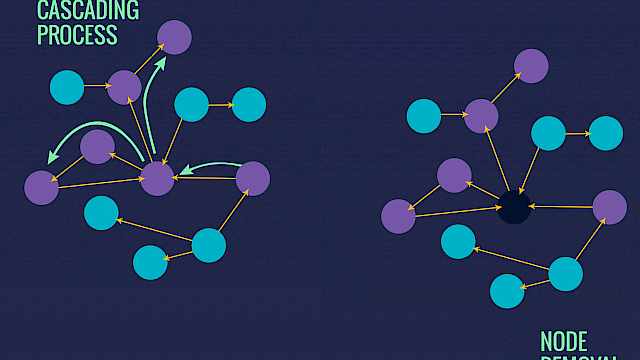There are few more demanding working environments than that faced by security and elite military personnel. The situations faced are uncertain, changeable and dangerous requiring accurate decision-making, skilled movement and co-ordinated action.
Understanding how people respond psychologically and physiologically in demanding settings has been the focus of research that I and colleagues have undertaken over the last 10 years. We have explored the subtle psychological and physiological differences that indicate whether a person is challenged or threatened under demanding conditions, why a person who is challenged performs better, and how social interaction, leadership and lifestyle can influence these responses.
Colonel David Stirling DSO, OBE, founder of the SAS.
The terms challenge and threat are used to describe psychological and physiological differences that relate to performance. I appreciate that ‘challenge’ and ‘threat’ are value-laden terms, but in this context, they are simply broad labels given to different physiological and psychological responses which occur in demanding environments. That is environments where success matters; effort is required to perform well, and there is the potential for harm (psychological or physical).
The ‘fight or flight’ response experienced in these situations is crucial to our research because we measure whether individuals are challenged, or threatened, through assessing cardiovascular reactivity.
When a person does not feel able to cope we see a threat response where there is little change in the volume of blood pumped by the heart and there is an increase in the resistance in the blood vessels.
Our research programme, and those of others, has identified that cardiovascular reactivity has consistently predicted performance in a range of tasks under pressure. Those people exhibiting cardiovascular responses indicating a challenge state perform better. This is because a challenge-response, reflected by these physiological changes, is proposed to reflect a positive motivational approach state with better decision-making, and motor-skill performance.
In our work in competitive sport, another demanding environment, we proposed that three resource appraisals underpin the different challenge and threat responses.
Control
Believing you have control over factors that may affect performance and how you can perform in a demanding environment is important for a challenge state. Conversely, focusing on factors that cannot be controlled, is associated with a threat state.Confidence
The belief in our ability to perform well and execute plans correctly is a crucial element in being able to perform in demanding environments. A high level of confidence is important for a challenge state, and the converse is true for threat.Focused
Finally, being focused on what can be achieved – an approach focus – is also important. Individuals who are challenged are focused on what can be achieved while those that are threatened are focused on what might go wrong.
This last point probably does require some unpacking. Planning for all eventualities and what might go wrong is important, and indeed for many people fear of failure is a powerful motivator. What matters though is that these thoughts become motivators to what can be achieved (‘It is important I do not fail and because of this I will do X’), rather than a person dwelling and focusing solely on failure and what might go wrong.
These resource appraisals can be developed in a number of ways. For example, and not surprisingly, practising can be a strong determinant. We found in recent work with emergency medicine teams prior to a simulation competition that time practised as a team was related to self-reported perceptions of challenge, with the teams that practised the most reporting that they had the highest level of resources to meet the demands of the task. Other ways of developing these resource appraisals include psychological strategies such as mental rehearsal to enhance feelings of control and confidence.
Using these three resource appraisals leaders can prime team-members to respond positively under stress. In our research, we found that prior to a demanding task if the instructions emphasised feelings of confidence, control and an approach focus, people responded physically with a challenge state. Indeed, it was sufficient to change three sentences in a 90-second instructional set for this effect to be observed.
As a leader emphasising the qualities your team has (confidence), drawing attention to what they can control (control) and keeping a focus on what can be achieved (approach focus), can help develop a challenge-response in demanding environments. Responses may also be influenced by how connected a person feels to a leader and the organisation more broadly.
Many of us have a strong affinity with the organisation to which we belong, and this is not surprising.
Membership of groups not only provides a sense of belonging but says something about who we are – they provide us with a social identity.
We found in our research that when people receive instructions from a person prior to a demanding task that they see as being from an out-group (i.e., not like them) they respond with a threat response. This illustrates the importance of leaders having a strong relational identity with their team. That is, the members of a team see the leader as ‘one of us’ sharing similar values, beliefs and experiences.
Interestingly, the work of American military Psychiatrist Jonathan Shay highlights that the sense of belonging is also crucial to how we deal with the aftermath of being in demanding situations. In his concept of moral injury psychological difficulties occurred when there was a betrayal of what’s right, by someone who holds legitimate authority (e.g., in the military – a leader), in a high stakes situation. So, how we are treated after difficult demanding operations is also key.
Being challenged in demanding work environments is associated with better performance. We facilitate a challenge-response through how we think, prepare, and live our lives. In the consultancy work I have done in elite military environments I have also been struck with how in the broadest sense the environment is crucial to performance. For example, how transitions are managed from a demanding work environment to home and how lifestyle factors, such as sleep quality are important.
In leadership roles, we can also influence others to respond in a challenge state. As the above quote from the founder of the SAS Colonel David Stirling illustrates, the battle with our emotions in demanding environments is ever-present and continuous but it is possible to control our responses.
Read more
Jim Blascovich, Mark D Seery, Carrie A Mugridge, R. Kyle Norris, and Max Weisbuch. 2004. ‘Predicting Athletic Performance from Cardiovascular Indexes of Challenge and Threat’. Journal of Experimental Social Psychology 40 (5): 683–88. Available at: https://doi.org/10.1016/j.jesp.2003.10.007.
Marc Jones, Carla Meijen, Paul J. McCarthy, and David Sheffield. 2009. ‘A Theory of Challenge and Threat States in Athletes’. International Review of Sport and Exercise Psychology 2 (September): 161–80. Available at: http://dx.doi.org/10.1080/17509840902829331
Ben MacIntyre. 2016. SAS: Rogue Heroes – the Authorized Wartime History. London: Penguin Random House.
Mark Seery. 2011. ‘Challenge or Threat? Cardiovascular Indexes of Resilience and Vulnerability to Potential Stress in Humans’. Neuroscience & Biobehavioral Reviews, Resilience and Adaptive Aspects of Stress in Neurobehavioural Development, 35 (7): 1603–10. Available at: https://doi.org/10.1016/j.neubiorev.2011.03.003.
Jonathan Shay. 2014. ‘Moral Injury’. Psychoanalytic Psychology 31 (2): 182–91. Available at: https://www.law.upenn.edu/live/files/4602-moralinjuryshayexcerptpdf.
Matthew Slater, Martin J. Turner, Andrew L. Evans, and Marc V. Jones. 2018. ‘Capturing Hearts and Minds: The Influence of Relational Identification with the Leader on Followers’ Mobilization and Cardiovascular Reactivity’. The Leadership Quarterly 29 (3): 379–88. Available at: https://doi.org/10.1016/j.leaqua.2017.08.003.
Martin Turner, Marc V. Jones, David Sheffield, Jamie B. Barker, and Peter Coffee. 2014. ‘Manipulating Cardiovascular Indices of Challenge and Threat Using Resource Appraisals’. International Journal of Psychophysiology 94 (1): 9–18. Available at: https://doi.org/10.1016/j.ijpsycho.2014.07.004.
Martin Turner, Marc V. Jones, David Sheffield, and Sophie L. Cross. 2012. ‘Cardiovascular Indices of Challenge and Threat States Predict Competitive Performance’. International Journal of Psychophysiology: Official Journal of the International Organization of Psychophysiology 86 (1): 48–57. Available at: https://doi.org/10.1016/j.ijpsycho.2012.08.004.
Martin Turner, Marc Jones, David Sheffield, Matthew Slater, Jamie Barker, and James Bell. 2013. ‘Who Thrives Under Pressure? Predicting the Performance of Elite Academy Cricketers Using the Cardiovascular Indicators of Challenge and Threat States.’ Journal of Sport and Exercise Psychology 35: 387–97. Available at: http://journals.humankinetics.com/jsep-current-issue/jsep-volume-35-issue-4-august/who-thrives-under-pressure-predicting-the-performance-of-elite-academy-cricketers-using-the-cardiovascular-indicators-of-challenge-and-threat-states.
Copyright Information
As part of CREST’s commitment to open access research, this text is available under a Creative Commons BY-NC-SA 4.0 licence. Please refer to our Copyright page for full details.
IMAGE CREDITS: Copyright ©2024 R. Stevens / CREST (CC BY-SA 4.0)






